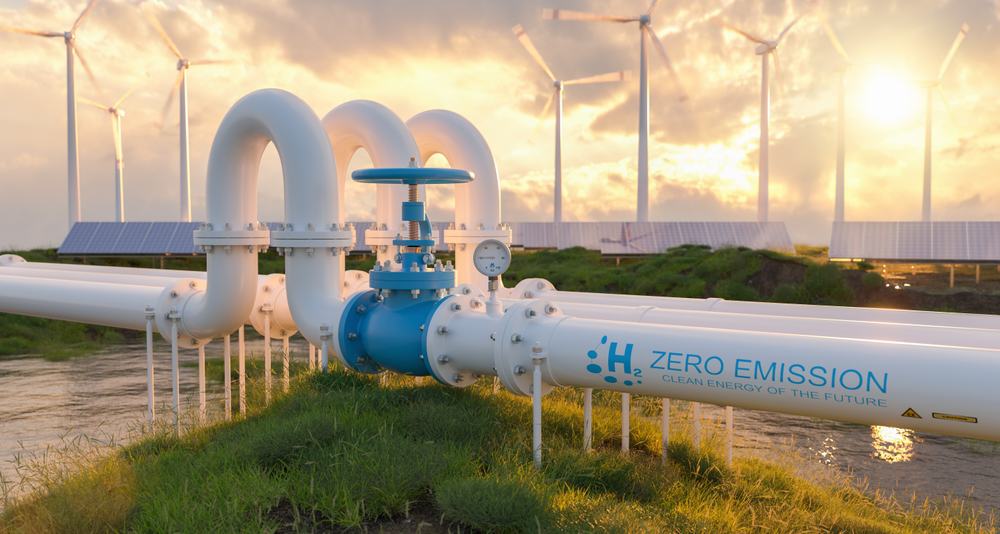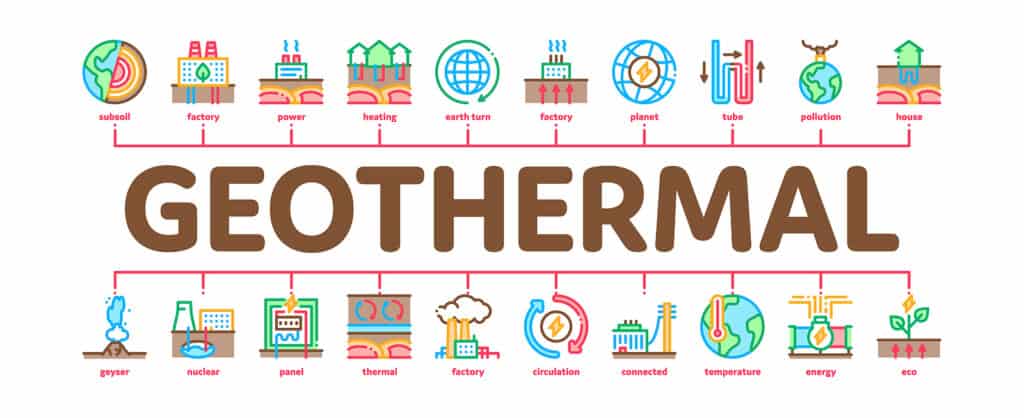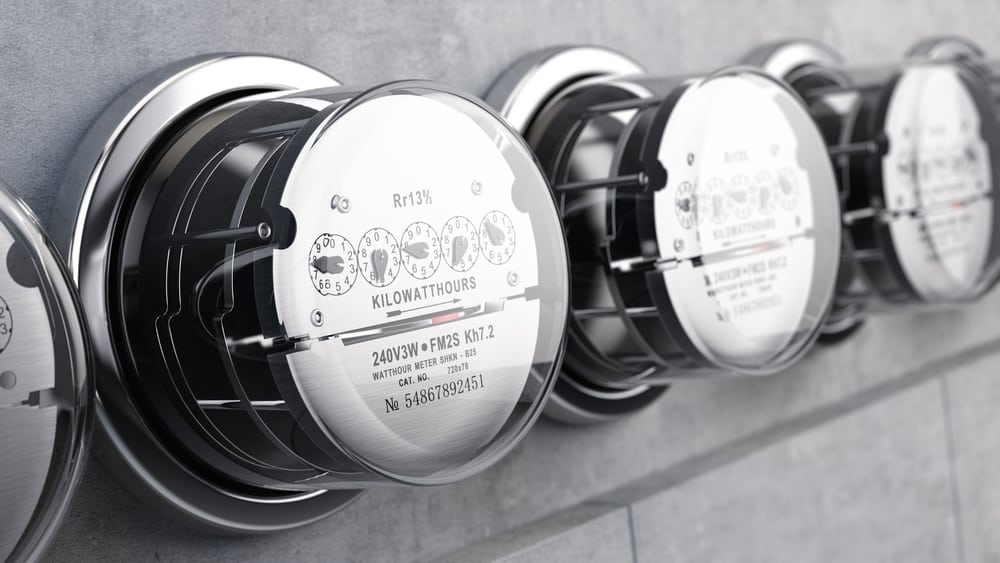Is Geothermal Energy Really Nonrenewable? Separating Fact from Fiction
In our pursuit of achieving ambitious sustainability goals and aligning with emission reduction targets set by regulatory bodies or voluntary initiatives, we, as a forward-thinking company, have been exploring various renewable energy options. Among these alternatives, geothermal energy has emerged as a compelling contender. However, there has been an ongoing debate about whether geothermal energy can be truly classified as renewable.
As a responsible company, we understand the significance of utilizing energy sources that have a minimal environmental impact and can be sustained over the long term. Geothermal energy, with its potential to provide a consistent and reliable energy supply, appears to align perfectly with our commitment to reducing our carbon footprint.
What is Geothermal Energy?
Geothermal energy is a fascinating and environmentally-friendly form of renewable energy that harnesses the Earth's intrinsic heat to generate power. The source of this energy lies deep within the Earth's core, where the decay of radioactive materials generates substantial heat. By tapping into this internal heat, we can access a sustainable and practically limitless source of energy.
To harness geothermal energy, sophisticated geothermal power plants are employed. These power plants employ a combination of advanced drilling techniques and cutting-edge technology to reach down into the Earth's crust, where the intense heat resides. As they delve into the depths, they encounter hot water and steam that are naturally produced by the Earth's warmth.
Once the hot water and steam are obtained, they serve as the driving force for electricity generation. Specifically, the steam is directed towards turbines, which are large mechanical devices designed to convert the kinetic energy of the moving steam into mechanical energy. As the turbines spin, they drive the generators to produce electricity.

Is Geothermal Energy Renewable?
The question of whether geothermal energy a renewable resource or not presents a multifaceted answer, taking into account the Earth's internal heat dynamics and the availability of this resource over time.
At its core, geothermal energy is derived from the Earth's internal heat, which arises from the gradual decay of radioactive materials within the Earth's mantle and core. As with many natural processes, this decay is not perpetual, and there will come a point when the radioactive materials responsible for generating the heat will deplete. Consequently, it can be argued that geothermal energy, like other energy sources dependent on finite resources, is not truly infinite.
However, the vastness of the Earth's internal heat reservoirs makes the situation more nuanced. The quantity of heat generated by the Earth's core is immense and is projected to be sufficient to power our planet for millions of years to come. Moreover, the processes responsible for the production of geothermal energy are continuous and ongoing. As long as radioactive decay persists, the Earth will continue to produce heat, ensuring a steady supply is geothermal energy renewable or nonrenewable over an extended timeframe.
How Does Geothermal Energy Work?
Geothermal energy harnesses the Earth's natural heat from its core to generate power. The process involves drilling deep wells into geothermal reservoirs, which are areas underground where hot water or steam is trapped. The intense heat from the Earth's core heats up the water or steam in these reservoirs. Once the hot fluid is brought to the surface through the wells, it is used to drive turbines connected to electricity generators.
As the turbines spin, they produce electricity, which can then be distributed to homes, businesses, and industries. In some cases, geothermal energy can also be utilized directly for heating purposes, without the need for electricity generation, by using geothermal heat pumps to extract heat from the Earth for space heating or hot water supply. The process is renewable and environmentally friendly, offering a reliable and sustainable source of clean energy.

Geothermal Energy Advantages and Disadvantages
Advantages of Geothermal Energy:
- Clean and Environmentally Friendly: Geothermal energy stands out as a remarkably clean and environmentally friendly energy source. Unlike fossil fuels, it does not release greenhouse gases or contribute to air pollution, making it an essential player in combating climate change and reducing our carbon footprint.
- Reliability and Consistency: Geothermal energy offers a high level of reliability and consistency in electricity generation. Unlike solar and wind power, which are dependent on weather conditions, geothermal power plants can operate 24/7, providing a steady and predictable supply of electricity. This stability is crucial for meeting continuous energy demands and maintaining grid stability.
- Remarkable Efficiency: Geothermal power plants boast exceptional efficiency rates, capable of converting up to an impressive 95% of the available heat into electricity. This remarkable efficiency translates into reduced fuel consumption and minimized waste generation when compared to traditional power plants, enhancing its overall sustainability.
- Cost-effectiveness: Once a geothermal power plant is established, the cost of producing electricity is relatively low, making it a cost-effective energy solution in the long run. Additionally, geothermal power plants boast lower operating costs compared to conventional power plants, making them an attractive investment for energy companies seeking economical and sustainable alternatives.
- Versatile Applications: Geothermal energy's versatility is a significant advantage. It can be utilized for a multitude of purposes beyond electricity generation, such as heating buildings and greenhouses, drying crops, and even district heating systems. This adaptability makes geothermal energy a valuable and multi-faceted resource for various industries.
Disadvantages of Geothermal Energy:
- Limited Geographic Availability: One of the primary disadvantages of geothermal energy is its limited geographic distribution. Geothermal resources are most prevalent in regions situated near tectonic plate boundaries, where significant geothermal activity occurs. This means that not all countries or regions have easy access to viable geothermal resources, hindering its widespread adoption.
- High Upfront Costs: Establishing a geothermal power plant can be a financially demanding endeavor, requiring substantial upfront investment. The costs associated with drilling, building infrastructure, and installing specialized equipment can present significant barriers, particularly for countries or companies with limited financial resources.
- Environmental Concerns: While geothermal energy itself is environmentally friendly, its extraction and utilization can pose certain environmental challenges. The drilling and injection of fluids into geothermal reservoirs may lead to ground subsidence, potentially resulting in sinkholes and other hazards. Additionally, inadequate management of geothermal reservoirs can lead to the release of greenhouse gases, offsetting some of the clean energy benefits.
- Technical Complexities: The development of geothermal energy can be fraught with technical challenges. The variability of geothermal resources makes it challenging to predict and optimize energy output. Drilling deep wells can be technically demanding and expensive. Moreover, the risk of mineral scaling in pipes that transport geothermal fluids can hinder the efficiency and performance of geothermal power plants.

Geothermal Energy vs. Fossil Fuels
Geothermal energy and traditional fossil fuels, such as coal, oil, and natural gas, represent two vastly distinct energy sources with significant implications for our planet's future. To fully grasp the implications of each, it's essential to delve into the intricacies of their formation, availability, and environmental impact.
Formation and Depletion
Fossil fuels have a remarkable history that spans millions of years. They are the result of organic matter, such as ancient plants and marine life, undergoing a transformative process over eons, resulting in the formation of carbon-rich deposits. Once we extract and burn these fossil fuels for energy, they are irreversibly depleted, and nature cannot replenish them at the same rate of consumption.
On the other hand, geothermal energy is born from the Earth's internal heat, a process driven by the decay of radioactive isotopes in the planet's core. This heat continuously flows towards the surface, creating geothermal reservoirs of immense energy potential. As long as the Earth retains its internal heat and geothermal reservoirs are not overexploited, this renewable energy source remains practically infinite and available for countless generations to come.
Environmental Impact
The environmental impacts of these energy sources set them poles apart. Fossil fuels are notorious for releasing copious amounts of greenhouse gases into the atmosphere when burned, exacerbating climate change and contributing to air pollution. The extraction of fossil fuels can also lead to habitat destruction, water contamination, and other detrimental effects on ecosystems.
In contrast, geothermal energy is considered one of the cleanest and most environmentally friendly energy options available. Geothermal power plants emit negligible amounts of greenhouse gases during electricity generation, and their overall carbon footprint is exceptionally low. Moreover, the use of geothermal energy for direct heating applications, like space heating and hot water supply, can further reduce reliance on fossil fuels and lessen environmental impacts.
Accessibility and Location
The accessibility of these energy sources varies significantly depending on geographical factors. Fossil fuels are distributed unevenly across the globe, and their extraction often involves challenging and environmentally disruptive processes like drilling and mining. Additionally, their transportation from remote extraction sites to consumption centers adds to the overall energy expenditure and environmental burden.
Geothermal energy, on the other hand, is geographically more widespread, though its exploitation is limited to areas with specific geological conditions. Regions located near tectonic plate boundaries or geothermal hotspots are prime candidates for harnessing geothermal energy. However, advancements in geothermal technology may pave the way for its utilization in a broader range of locations, promoting energy diversity and sustainability.
Economic Considerations
Economically, there are certain differences between fossil fuels and geothermal energy. Initial investment costs for building geothermal power plants can be higher than for conventional fossil fuel-based plants. However, geothermal energy's long-term operating costs are relatively lower due to the absence of fuel expenses, making it cost-competitive over the lifespan of the plant. Fossil fuel prices, on the other hand, are influenced by market fluctuations, geopolitical factors, and extraction difficulties, leading to more uncertainty in long-term energy expenses.
Role in Combating Climate Change
Given the contrasting environmental impacts, geothermal energy assumes a vital role in the global effort to combat climate change. Transitioning from fossil fuel-based energy sources to geothermal power can significantly reduce greenhouse gas emissions, thereby contributing to carbon dioxide mitigation and curbing the effects of global warming.
Here is a video about Geothermal Energy
The Future of Geothermal Energy
Geothermal energy, with its immense potential and eco-friendliness, holds a promising future in the global energy landscape. As technology continues to advance, and environmental consciousness grows, geothermal energy is poised to play a pivotal role in the transition towards a more sustainable and renewable energy future.
One of the most exciting developments in the geothermal energy sector is Enhanced Geothermal Systems (EGS). EGS technology represents a groundbreaking advancement that could revolutionize the utilization of geothermal resources. Unlike conventional geothermal systems that rely on naturally occurring geothermal reservoirs, EGS enables the economic recovery of geothermal energy from previously inaccessible or low-permeability rock formations. By injecting water or other fluids into the reservoir and creating artificial fractures, EGS technology effectively enhances the heat exchange process, unlocking vast untapped geothermal potential worldwide.
EGS holds the promise of turning regions with previously limited geothermal resources into hotbeds of geothermal activity, expanding the geographical reach of this renewable energy source. With improved efficiency and increased resource availability, EGS could significantly boost geothermal energy production and contribute substantially to reducing our reliance on fossil fuels.
Despite the bright prospects, geothermal energy does face challenges that require careful consideration. One of the primary obstacles is the high upfront costs associated with drilling and setting up geothermal power plants. Initial exploration and drilling expenses can be substantial, making it essential for governments and private investors to offer incentives and financial support to facilitate the development of geothermal projects.
FAQs about Geothermal Energy: Separating Fact from Fiction
1. Is geothermal energy considered a renewable energy source?
Yes, geothermal energy is considered a renewable energy source. It harnesses the heat from the Earth's core, which is virtually limitless on human timescales. As long as the Earth continues to radiate heat from its interior, geothermal energy will remain available.
2. What makes geothermal energy renewable when compared to other sources like fossil fuels?
Geothermal energy is renewable because it relies on the Earth's natural heat, which continuously regenerates over geological timescales. In contrast, fossil fuels, like coal, oil, and natural gas, are finite resources formed from ancient organic matter and are being depleted faster than they can be replenished.
3. Can geothermal energy be depleted or exhausted like other nonrenewable resources?
Technically, geothermal energy can be depleted if the heat extraction rate exceeds the rate at which the Earth's core naturally produces heat. However, this depletion would take place over geological time frames, making it practically inexhaustible on human timescales.
4. Is there a risk of geothermal energy running out if it is heavily utilized?
While there is a theoretical risk of localized depletion if geothermal reservoirs are not managed properly, careful and sustainable management can mitigate this risk. Monitoring the heat extraction rate and allowing sufficient time for reservoirs to recharge can maintain the long-term viability of geothermal energy production.
5. Does geothermal energy release greenhouse gases like fossil fuels do?
Geothermal energy is one of the cleanest energy sources available, as it produces very low emissions of greenhouse gases. The only emissions associated with geothermal power plants come from some non-electric uses, such as heating and direct applications, where trace amounts of gases like carbon dioxide and hydrogen sulfide can be released. However, these emissions are significantly lower than those from fossil fuel-based power plants.
6. Is geothermal energy environmentally friendly overall?
Yes, geothermal energy is considered environmentally friendly overall. It has a minimal environmental footprint, low emissions, and does not contribute to air pollution or water contamination like fossil fuel-based energy sources. Additionally, geothermal power plants have a small land footprint compared to many other renewable energy technologies.
7. Can geothermal energy be utilized anywhere in the world?
While geothermal energy can be harnessed in many regions, its availability varies depending on the geological conditions of a particular area. Countries located on tectonic plate boundaries or geothermal hotspots typically have greater access to geothermal resources. However, advancements in geothermal technology may enable its utilization in more locations in the future.
8. How long can a geothermal power plant operate?
A well-designed and well-maintained geothermal power plant can operate for several decades. The lifetime of such a plant depends on various factors, including the quality of the reservoir, the efficiency of the plant's equipment, and the maintenance efforts.
9. Are there any negative environmental impacts associated with geothermal energy?
While geothermal energy is environmentally friendly compared to fossil fuels, it is not entirely devoid of potential negative impacts. Improper drilling or injection practices can induce seismic activity or subsidence in some cases. Additionally, the release of certain gases and minerals during geothermal fluid extraction may require appropriate disposal measures.
10. How does the cost of geothermal energy compare to other renewable sources and fossil fuels?
The cost of geothermal energy can vary depending on the location, the technology used, and the scale of the project. Generally, the initial investment for geothermal power plants can be higher than fossil fuel-based plants. However, once operational, geothermal energy has relatively low operating costs due to the free and continuous fuel source, making it cost-competitive with other renewable energy sources over the long term.
11. Can individual homeowners benefit from geothermal energy? Yes, individual homeowners can benefit from geothermal energy through geothermal heat pumps. These systems use the constant temperature of the ground to efficiently heat and cool homes, providing energy savings and reducing greenhouse gas emissions.
12. Is geothermal energy a viable solution to combat climate change?
Yes, geothermal energy can play a significant role in combating climate change. By displacing fossil fuel-based energy sources, geothermal power can help reduce greenhouse gas emissions and transition towards a more sustainable energy future.
Conclusion
In this thought-provoking reflection, the author highlights the immense potential of geothermal energy as a clean and renewable power source. They express their deep commitment to environmental sustainability and combating climate change, acknowledging geothermal energy's role in reducing greenhouse gas emissions and lessening our reliance on finite fossil fuels.
The author finds hope and optimism in geothermal energy's ability to tap into the Earth's natural heat and provide a reliable energy supply, making it a viable solution to our pressing environmental challenges. They express enthusiasm for the advancements in Enhanced Geothermal Systems (EGS) technology, which extends the reach of geothermal energy to untapped areas. Additionally, the author praises geothermal energy's advantages, such as cost-effectiveness, versatility, and minimal environmental impact, reinforcing their belief in its potential to transform the global energy landscape.
As an individual dedicated to making a positive impact, the author is energized by the prospect of incorporating geothermal energy into their company's sustainability strategy to achieve emission reduction goals. They see geothermal energy as a beacon of hope for a greener future, emphasizing the importance of continued innovation, responsible resource management, and global collaboration in realizing its full potential.

